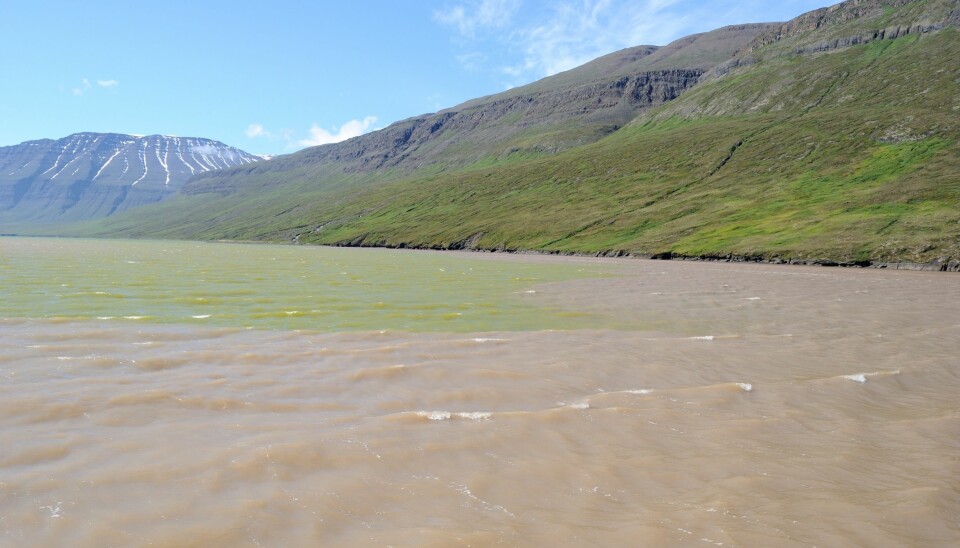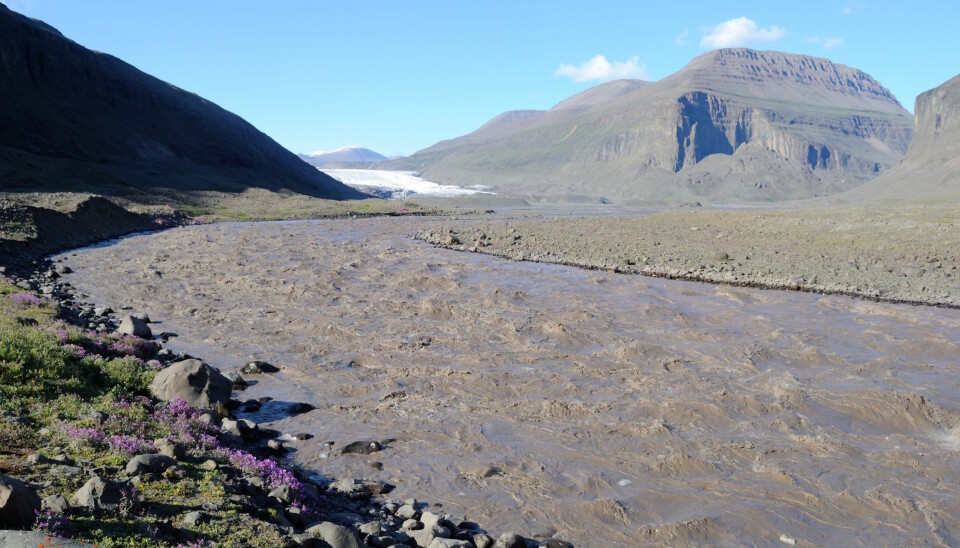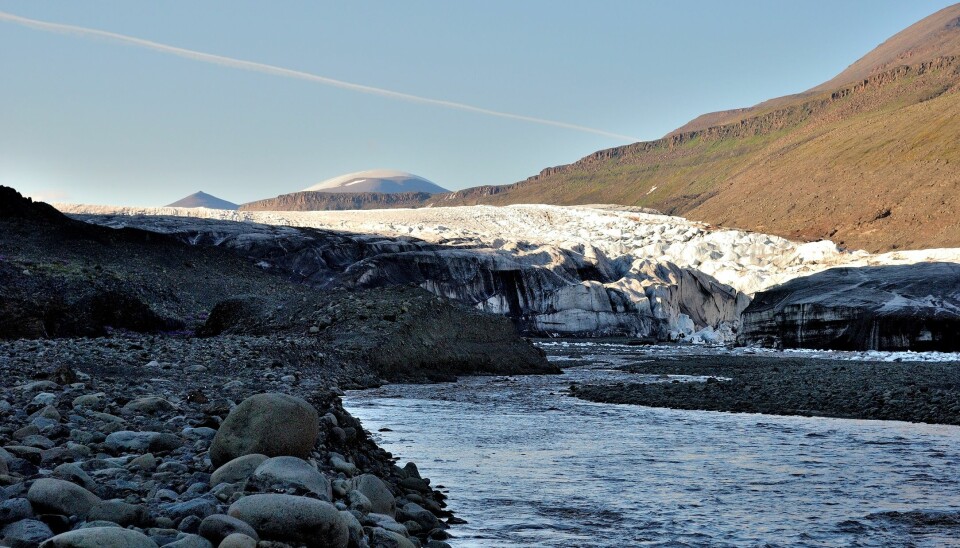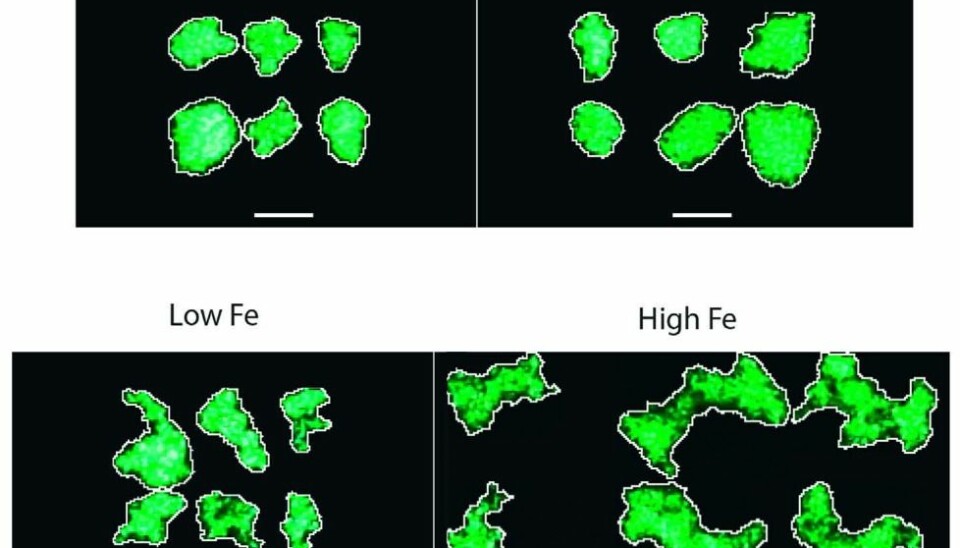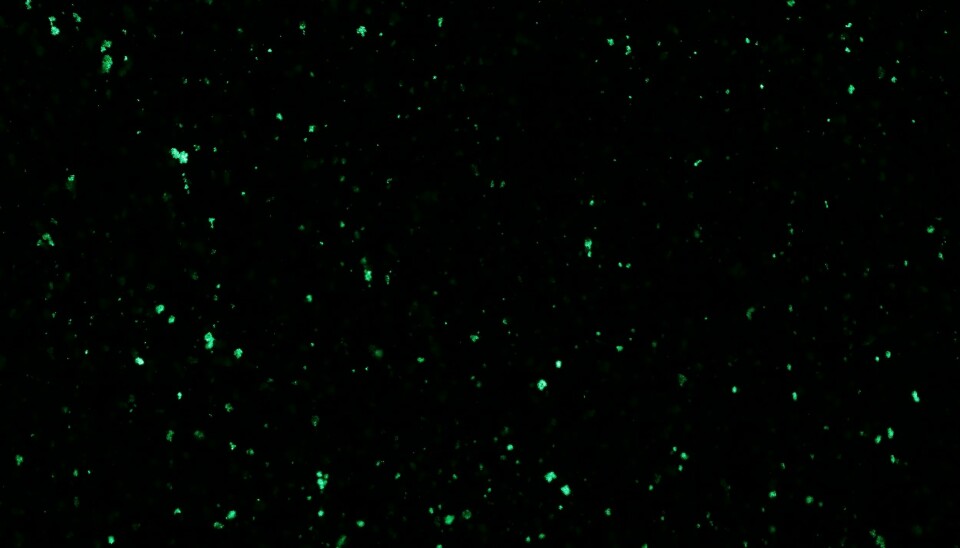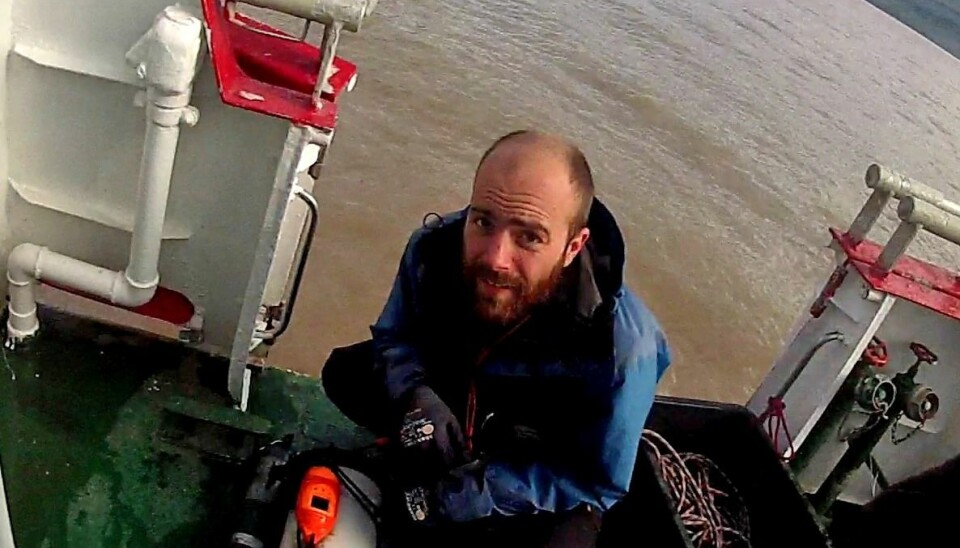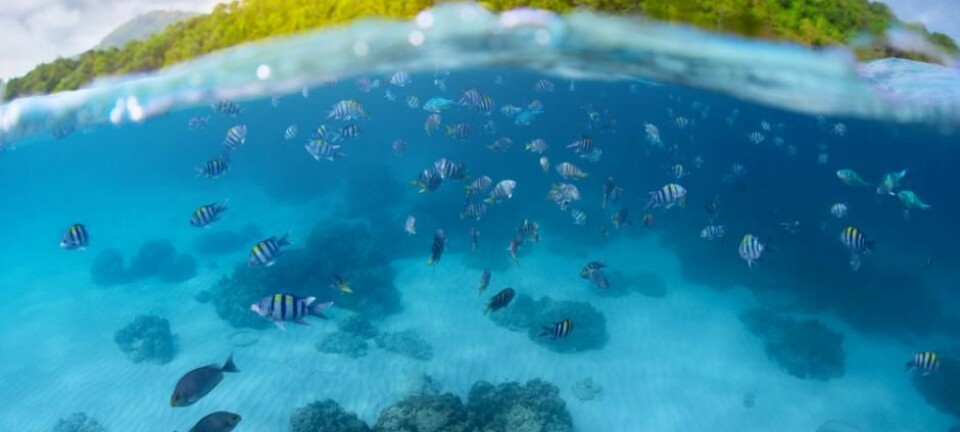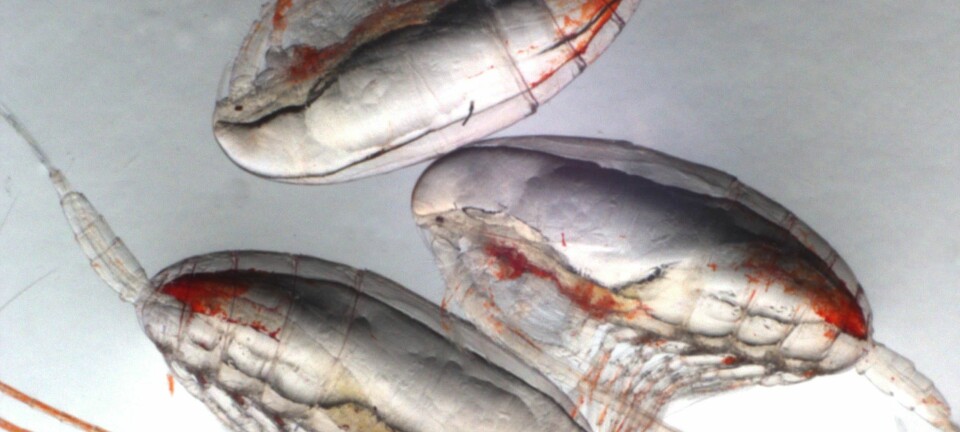Meltwater from West Greenland is a hotspot for ocean nutrients
An underwater camera provides new insights into how microscopic particles in glacial meltwater could boost marine algae and help remove carbon from the atmosphere.
A specially developed underwater camera is providing scientists with fresh insights into how iron-rich sediments, an important food source for marine algae, behave in the ocean.
And it turns out to be rather different than many scientists had thought.
Instead of being deposited close to the coast, it appears that the iron particles can be transported further into the fjord, towards the sea. Here, it is available as a nutrient for marine algae, which are a crucial component in the ocean’s ability to remove CO2 from the atmosphere.
“We’re looking at a very small scale--how individual particles that are micrometre sized, stick together or aggregate. But it’s related to very large scale processes and ultimately to how well the ocean is able to absorb CO2 from the atmosphere,” says lead-author Thor Markussen from the Center for Permafrost (CENPERM) at the University of Copenhagen, Denmark.
Melting glaciers pump iron into the ocean
Melt water from the vast ice sheets in Greenland carry large amounts of sediments from land to the ocean. These sediments are the remains of mountains and soils, ground down into dust over thousands of years by glaciers moving over the land, and include elements such as iron.
In the ocean, iron provides vital sustenance for marine algae, helping them to grow and form the base of marine food webs. These algae also provide nature’s own version of carbon capture and storage, by removing carbon from the atmosphere as they grow.
But in the cold waters of the Arctic, scientists know surprisingly little about whether this iron can be transported out into the fjord where the marine algae can feast, or whether it is simply deposited and locked away nearer the coast.
Read More: Meet the copepod: the oceans’ little carbon sponge
Underwater camera captured odd shaped clumps of sediment
Scientists have previously hypothesised that much of the iron sticks to the sediment particles, which then clump together into so-called “flocs.”
These flocs are assumed to be spherical in shape, which allows them sink to the bottom of the water column shortly after entering the fjord, locking the iron away where the algae cannot reach it. But how these clumped particles actually behave in the Arctic has been somewhat of a mystery.
To see the flocs in action, Markussen modified a camera and deployed it into the cold waters of the Disko Fjord in West Greenland where the sediments are particularly rich in iron.
“We used a new camera system, developed as part of my Ph.D. It’s a normal digital SLR camera, inside a container, but it uses a laser light to illuminate the particles,” says Markussen.
Using the new camera, Markussen and colleagues were able to film these clumps of material in the fjord, and they were surprised by what they saw.
Instead of forming into regular, spherical shapes, they observed irregular shaped clumps located much further away from the coast than they had expected.
See how this specially developed underwater camera is providing scientists with fresh insights into how iron-rich sediments, an important food source for marine algae, behave in the ocean. (Video: Kristian Højgaard Nielsen / ScienceNordic.com / with footage from Thor Markussen)
Laboratory experiments confirmed iron was the key
While the camera could clearly see the shape and size of the particle clumps, it could not say for sure whether they contained iron.
So back in the laboratory, Markussen set up an experiment to see exactly what was happening in the ocean as these sediment clumps formed, and what role, if any, iron had to play.
First, he submerged a modified DSLR camera into a container of fresh water that contained sediment particles. A propeller ensured that the water was constantly mixed as he gradually added iron. The camera then recorded the flocs as they formed.
Markussen repeated the experiment in another container, this time with salty water.
“This mimics a situation where the aggregation is happening in the deeper salty water [of the fjord] or the very top water of the fjord where there is more freshwater from the melting glaciers,” says Markussen.
The experiments confirmed that iron helped form the irregular shaped clumps of material that Markussen observed in the fjord, and that this irregular shape helped the particles to stay afloat so they could be carried further away from the coast.
Read More: Greenlandic fjords get their organic matter from Russia
Important research for understanding the global carbon cycle
The new research is not only a case-study for understanding how iron behaves in this one area of the Arctic Ocean, says co-author Bo Elberling, professor and director of the Center for Permafrost at the University of Copenhagen, Denmark.
“Thor’s work is very interesting. Disko Island contains lots of basaltic rocks, which could be an important source of iron in a larger Arctic context,” says Elberling.
Elsewhere in Greenland, the geology is dominated by another type of rock called Precambrian gneiss, which contains far less iron. So the meltwater entering the Disko Fjord could therefore be a ‘hot spot’ of iron for marine algae throughout the entire Arctic, he says.
Read More: How algae slime impacts the climate
Camera can also study microplastics in the ocean
Markussen sees other uses for his new camera beyond climate change research.
“This new camera method can also be used to look at microplastics in the ocean,” says Markussen.
“This is a growing concern and it’s difficult to communicate to people since we can’t see it. But these systems can visualise it so we can show people how much we’re polluting the environment with these microplastics,” he says.
“It’s a totally different perspective, but an example of how these kinds of methods that were developed to look at climate change in the Arctic, can be used in another issue that is very relevant to society.”
Scientific links
- Flocculated meltwater particles control Arctic land-sea fluxes of labile iron. doi:10.1038/srep24033
